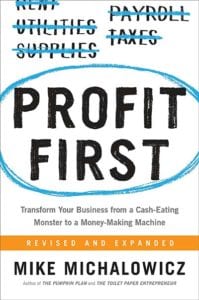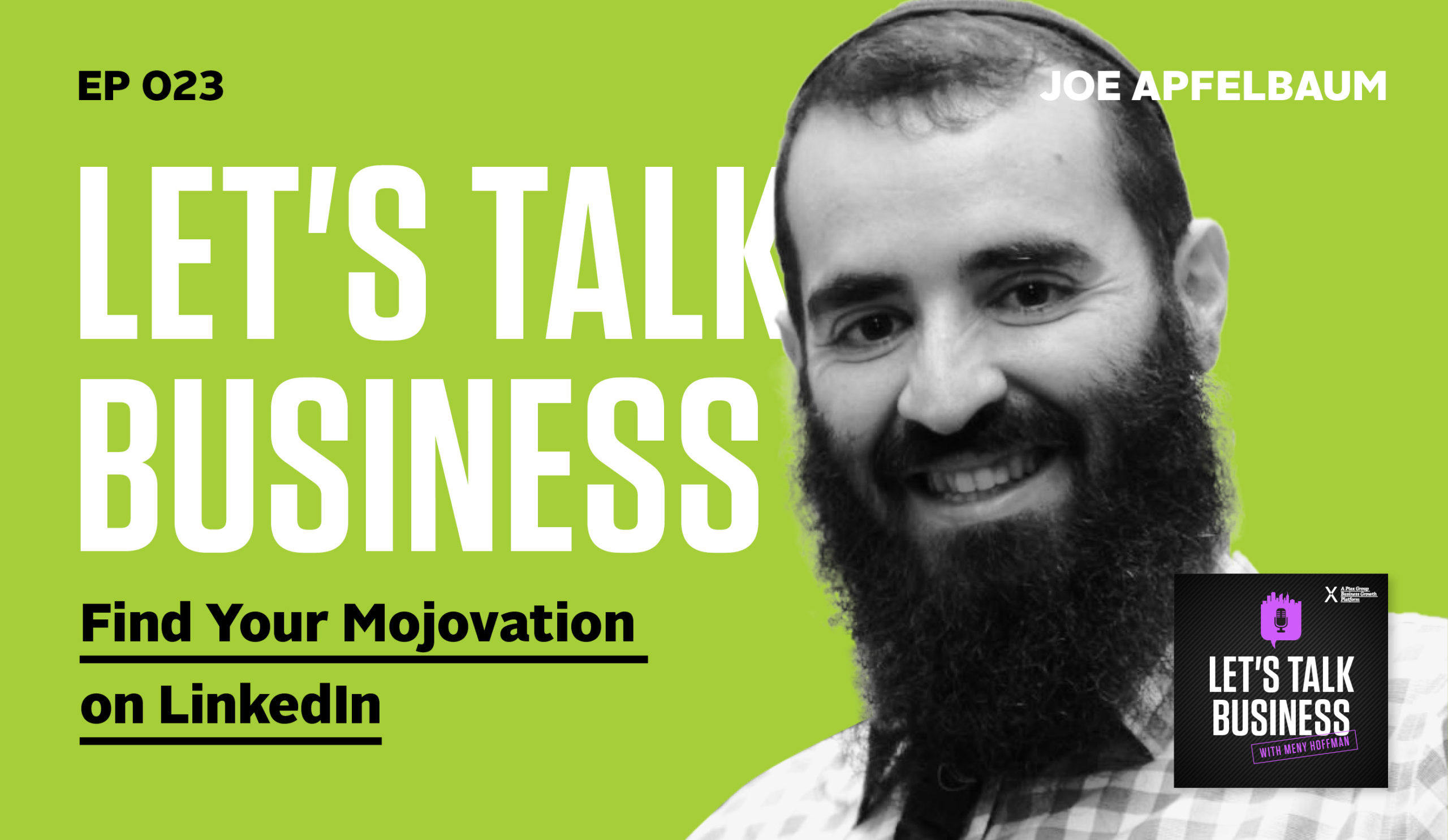Meny Hoffman is joined by Laura Posey in exploring the strategy of simplifying your business plan for the entire year to achieve maximum growth.
As well-intentioned as carefully crafted business plans are, they often become so complicated that they eventually wind up being neglected instead of materialized.
In this eye-opening episode with my guest Laura Posey, we focused on simplifying the business plan—and how you can plan your entire year on one sheet of paper. Laura is known as the Simple Planning Specialist for her unique ability to laser-focus her clients as they build their business plans to get dramatic results. Her Simple Strategic Plan is used by over 2,500 companies worldwide, from startups to Fortune 100’s. She’s the author of the book called How to Plan Your Entire Year on One Sheet of Paper and is an internationally recognized speaker, author, and consultant.
In this episode, Laura shares how you can narrow down your strategies while producing better results and maximizing your resources. Laura explains how thinking bigger than your business is essential to a winning business plan, the proper way to create core values that will guide your business, and how to focus on your daily activities to get the output you want. I love this episode and encourage everyone to have a listen. Without further ado, here is the interview.
Listen to the podcast here:
Download the audio file here.
Simplify Your Business Plan for Dramatic Results—with Laura Posey
—
Laura, thank you for joining me on the show.
Thanks for having me, Meny. It’s great to be here.
You and I have been involved in a group together for quite some time. I’ve always been fascinated by the focus of helping people strategically plan their year. There’s a line that you use, it’s the title of your book, How To Plan Your Entire Year On One Sheet Of Paper. This is a topic that intrigues me and our readers on the show will find value in this subject. I figured let me get you on the show. Let’s have a conversation about it. 2021 is around the corner. It was the perfect timing for that. For our readers, a little bit of your backstory. This topic is an important one. It’s not something that you would see a typical coach would niche down and focus on this particular aspect of business growth. Tell me a little bit more about your journey and how you arrived at this?
[bctt tweet=”By knowing what you want to focus on in life and how to run it, it is easy to know what kind of business you want.” via=”no”]
I created something that I needed for myself and it worked well and I started sharing it with other people. Lo and behold, it worked for them as well. I had gotten to a place in my business where I was frustrated. I was ready to kill my business partner. Things weren’t going the way I had wanted. I started a business because I wanted freedom, time, and money. I ended up with a business that gave me neither.
And so I ran away to Sedona, Arizona for a retreat. One day I got up one morning and decided to hike out to Cathedral Rock. I got lost along the way and I almost died. After I was reflecting on what had happened, I realized that the whole reason I had gotten in trouble on my hike was because I had set off with no preparation. I didn’t have a map. I hadn’t thought about where I wanted to go. I just thought, “I’m in good shape. I’ll do this.” I realized I’d done the same thing with my business. That’s why I had created a mess. I hadn’t taken the time to be clear about what I wanted and what I didn’t want. And to commit that to paper and to use that as a decision-making tool along the way. So, I created my first simple strategic plan that evening and I haven’t looked back since.
I deal with many business owners and I always say that it’s easy to grow a business, managing the growth is the hard part. There are different components of why it’s hard. Sometimes it’s about creating the systems, processes, and scalability in your organization, but an important part of it is the planning and understanding of what’s your destination. Back up from there and understand what you need to do in order to arrive at the destination. We do a lot of planning for our company and our business, but most of the time, regardless of what exercise you give them, they almost turn blank. I don’t even know what I want. Share with me a little bit about what the process is. It’s not just asking the right question. What is that mindset that a person needs to be in to be able to sit down and start planning the year?
One of the things that I’ve learned over time is that your business is there to support you and your family. That’s why you started it. It is there to be your income stream and be the thing that serves you and your family by serving your clients. One of the things that we do with our clients all the time is before we start with the business planning and vision, we start with the life vision. What do you want? What life do you want to lead? Often people will say, “I want to travel the world.” I say, “Where do you want to go?” We force people to get clear about what they want. A lot of times they have these vague ideas of, “I want to make $1 million.” I say, “Why? What are you going to do with it?” When we get people focused on what it is they want in their life and how they want their life to run, it becomes easy then to figure out, “What business do I need to have in order for me to have the life that I want? How big does it need to be? How am I going to work in it? How many other people do I need around me? What do I need to build to live the life that I desire?” It changes everything when we start with that life piece.
Let’s talk about the actual process of getting into that one sheet of paper. For people that have never done planning to this extent, most of the time when a person may have listened to a podcast, read a book, or somebody told them, “You’ve got to start planning,” they over-complicate it. I feel that it becomes complicated. You never know, “Am I making progress or not?” You could fool yourself into the process of saying, “We’re making progress. These are the seven sheets of paper. Every single thing is linking out to other pieces of the business.” To go through that one sheet of paper, what are the key aspects and the different components that sheet of paper is made of?

It starts with what we call the foundations, which are the business visions. What are you trying to build? What does this thing look like? How big is it? How much money is it generating? What clients do you want to serve? What do you want to be known for? It’s planting a flag and saying, “This is one I want to build.” The next thing that we do in the foundations is we lay down the core values. These become decision-making tools. What are our beliefs as an organization about how we think business should be done and how people should treat each other? What do we care about in this business? We’re careful to limit it to five core values. One of the things that I see happen a lot of times in organizations is, “We have twelve core values.” I’m like, “Name them all,” and they can’t. I was like, “If you can’t remember them, they’re not core values. They don’t matter. You need to be able to spin them right out.”
Five seems to be the maximum number that people can remember easily and turn into behaviors. Let’s say your business vision is 5 or 10 years out. We don’t put a date on it. We define what it is that we want to build. Then we come back and we say, “Given where I am now, where do I need to be in three years to be on target for that big vision? Beyond next year, I want to layout some milestones that I can aim at that are a little closer than that big vision because sometimes the vision can be a little overwhelming and it can be hard to figure out how we’re going to get there.”
We lay down our three-year targets and we do about four of those. We step in a little closer and say, “Where do I need to be in the next twelve months if I’m going to be on target to hit those three-year targets?” We’re shortening the timeframe. It’s like, “If I’m driving from New York to Los Angeles, where do I need to be at the end of day one? Where do I need to be at the end of day three? Where’s my ultimate destination?” We want to lay some places along with that map. Once we get the one year, the twelve-month goals in place, then we dig down and we say, “If we’re going to achieve these goals, things have to happen in our business.”
There are things that have to happen on a regular basis. They’re the lead generation client services things that happen. They need to happen on a weekly basis. The next thing under our goals that we do is we look at what are the weekly activities that have to happen and how much of them have to happen if we’re going to achieve our goals? For example, if you’re in the B2B space, maybe you’re using LinkedIn as a primary lead generation method. We might say, “We need to have ten new quality LinkedIn connections every week.” That new connection can be either somebody new that we’re talking to, or it can be somebody that we know and we’re deepening the relationship.
One of the things in my plan is that every week I reach out to two new members and I reconnect with two existing members. Those are weekly activities that every week I got to get these things done because I know that they’re driving me towards my goals. We’ll layout 3 or 4 weekly activities with metrics and we check on those every single week, “Did I do what needed to be done to drive the business forward?” We step back, we look at our goals and we say, “What has to change in this company if we’re going to achieve our goals?” Generally, there’s either something that we’re doing that we need to improve on or something that we’re not doing that we need to add. Maybe we need a new service offering or a new product.
[bctt tweet=”‘Change your tactics, not your goals.'” via=”no”]
Maybe we need to increase our prices on certain things, or maybe we need to deliver some more value in something that we’re already doing. Those then become projects. We look at it and say, “Maybe one of our projects is we need to create a new online course.” We would define that project as developing an online marketing course. Maybe one of the things that we need to do is hire somebody. Maybe one of our projects is to hire a new salesperson. Right behind hire a new salesperson becomes train the new salesperson. Those are projects that need to get done. Projects are a series of activities that have a defined beginning and end. You know when you’ve gotten them done. They can be broken down into tasks.
Once we know what our projects are, we can do basic project management. We break them down into tasks and we assign those tasks to certain people with deadlines. On this one sheet of paper, we have our marching orders for the year. We know the repeat activities that have to happen. Those have to go into our calendar and get done. Those prospecting, strategic alliance and lead generation activities go into our calendar. We know what we’ve got to do every week. Our projects are broken down into tasks and they’re laid out on a timeline. We know the tasks that have to happen and the changes that we have to create in our business. Together, those weekly activities and projects add up to accomplishing our goals. If we get our goals done now, we bump them up next year. We make sure they’re in alignment with the three-years and it’s lather, rinse, and repeat.
The cool part of it is that sometimes as a business owner, we hit some stumbling blocks. We do not see the growth. We do not see the plan of action of where we are going to end up in our destination. We look back and say, “What did I do wrong?” Most of the time, you cannot pinpoint it because you’re confused. When you have that sheet of paper in front of you, you can right away say, “Where did I fail?” You didn’t do your activities. The project that is part of that plan was never executed. You didn’t hire that person and you plan to increase sales, but you outlined that in order to increase sales, I need to have that salesperson. He ended up never hiring that salesperson. How did he expect to achieve the results that you set out to do?
The biggest benefit of having a plan of action is it gives you daily activities. For our readers, maybe some of you are not business owners that are involved in planning your business. Let’s say you’re a salesperson or even you’re looking to bump up your career or anything else. What I see from this is that instead of looking at the outcome, “How much money do I want to make at the end of the quarter and end of the year?” Think about what activities do I need to do daily and then check yourself against that because that’s where you could see where the numbers are off. Is it an activity, is it in the closing ratio, and whatever it is? The outcome will happen automatically if your numbers are stacking up.
The activities are the only thing that you have control over. You can’t control when somebody buys or if they buy. You have absolute control over how many people you reach out to, how many times you reach out to them, and what you say to them. Tracking that and making sure that you’re doing the regular activities, and then you’re creating the changes in your business that you want to create.

I want to ask you a couple of practical questions regarding this process. The first question is, is this something that’s done by the team? Is this done by leadership? Is this done by the business owner themselves? As you started off, a lot of the aspirational part is what type of life you want to lead. What is the best practice on that?
A lot of it depends on how the organization is set up. In some of the companies that I work with, the owner is in charge and this is their business. That’s who we work with. What I find is that when you start bringing in lots of other people and ideas, the more people you have in the room, the more watered down things tend to get. The less focused they tend to get because everybody’s got competing interests. If you’re the owner of the business and the buck stops with you and you own the whole thing 100%, it’s your plan. You get to roll it out to the business.
I was working with a client and they have a company where a lot of people in the company can buy in a law firm or an accounting firm where they have lots of members. We had thirteen people in their strategic planning session. Some of them are senior members, some are getting started, and some only own a few percent of the business, but they are all owners. They all are going to get a distribution of profit from this. It was important for all of them to be in the room. It’s harder to do it that way. The first time we did their plan with them, we spent two full days doing it because they’d never had a strategic plan and it took that long to get it out. We did the plan update over the last two days and got that done in about seven hours with thirteen people.
Another question I wanted to ask you. A lot of business owners are afraid of this process because I say, “I don’t have that level of clarity and I’m still winging it.” Sometimes when something is fixed on paper, you have that notion, “Nothing could deviate. This is the plan and I have to stick to it regardless if it works or doesn’t.” What flexibility do you allow your students and people that are doing this throughout the year to make some changes or updates to that one sheet of paper?
One of the things that we do is down to the goal level for the year, things are fixed. Once you set your goals, the goals are there. We may change the tactics over the year. We look at 2020 with COVID. Clients who are professional speakers and in March 2020, their entire revenue stream went away because all of the stages went away. They had to change their tactics. As we say around here, “Change your tactics, not your goals.” Each quarter, what we do is we sit down and go, “Here are the goals. Where are we on those goals? Are we on track? The quarter that we have coming up. We’ve got projects assigned for this quarter. We’ve got tasks assigned for this quarter. We’ve got weekly activities assigned for this quarter. Are those still the right ones?” I’ve got a call with my group coaching clients and it’s our quarterly planning day. We will go through and check everybody’s quarterly plan and say, “Is this still the right set of activities and projects to close out this year to achieve your goals?” If not, then we make adjustments. We do have the flexibility to adjust every quarter. We don’t adjust within the quarter.
[bctt tweet=”If you do regular activities within your business, then you are creating actual changes.” via=”no”]
It’s a never-ending game.
You might as well wing it. You’re constantly adjusting.
For those reading this and they want to take the next step, or they even want to prepare, to be ready, and to be able to put something on paper, what would be that first or second step they need to do if they want to take action immediately?
One of the tool that we use a lot around here is called our Daily Success Checklist. That’s a great way for people to get started and start thinking about, “What do I need to do to grow my business?” It’s a free tool that we make available to people. They can go to our website to SimpleSuccessPlans.com/daily. They can download the Daily Success Checklist. We’ll give them printable and fillable copies of the checklist. There’s a tutorial video to show them exactly how to use it. That’s a great way to start getting focused on a micro-level. Once people get control of their day, they start to realize, “I can do this. I think I could take that step forward and get control of my year.”
You spoke one of the elements of the planner which is the core values. It’s not only related to you. It’s something that you need to cast to your team. How do you advise people once they have that vision in a piece of paper how they want to plan for the year? How do you communicate that to your team? How do you keep your team engaged?

Ideally, you have weekly meetings with your team, even if they’re quick huddles and standup meetings. One of the things that we advise people to do with the core values is in every meeting, ask your team, “Can somebody give me the example of something we’ve done in the last week that demonstrated one of our core values?” Ask that question and people can point out something somebody else did, or they can step up and say something that they did. It allows you to connect that concept of value to actual behavior. The next question is, “What is something you’re planning to do for this coming week that demonstrates one of our core values?” People are thinking proactively about, “How am I going to live these values? How am I going to show my coworkers, my clients, and our suppliers what our core values are? How are we going to demonstrate those in action?” That works on the core value side.
With the vision, it’s helpful for people to deeply understand the key pieces of that. When we’re talking about revenue and profit, I don’t share those a lot of times with the whole team. It’s not meaningful for them. A lot of times, the numbers don’t make sense. They don’t understand the books. It’s more confusing. We can turn it into a percentage. We can say, “We want to double.” When I say double, we’re talking about double the number of clients that we have. Those are things that people in your organization can understand. You want to give them goals and an understanding of things that make sense to them. They can say, “We have 100 clients now. We want to go to 200 clients.” That makes sense. Whereas if you say, “We want to go from $1 million to $2 million,” they’re like, “What is that?” Within the vision, we talk about things like, “What do we want to be known for?” We want to reinforce that with people and say, “We want to be known for the fastest service, the highest conversions, or whatever it is.” You’re planting that flag and constantly reinforcing, “This is what we want to be known for, so our work has to demonstrate this.”
[bctt tweet=”By getting control of your day, you’ll realize that you can start getting control of your year as well.” via=”no”]
This is powerful because a lot of times companies could come up with core values and it becomes nice statements on the wall or the website, but it needs to be actionable. It needs to be something that is a culture of excellence. It improves the way things are operating. It becomes a great statement when you are looking to hire great talents. In our first meeting, we have what we call the ethos, which is our core values booklet, where I could share it with the potential hire and say, “This is who we are.” You could sometimes see on the person that they admire this organization or maybe they say, “I just need a paycheck. I don’t care about this stuff.” Then you feel that person will not be adding to the culture.
You hit on a keyword, culture. Your core values and your vision define your culture. They become great decision-making tools. They help you understand who we should bring in as employees, but also who we should bring in as clients. Is this client aligned with our core values and is this client going to move us closer to our business vision? You can use that as a filter for any decision that you have to make. If the answer is yes, then we do it. If the answer is no to either one of those, it’s an automatic pass.
For our readers, pay attention and start taking action on what we discussed. There’s a saying that I say, “Version one is better than version none.” Some people are afraid to have a perfect one sheet of paper, a perfect vision, or a perfect plan. Therefore, they’d rather not do it at all. Take action. That’s important. Let’s close with four rapid-fire questions. Number one, a book that changed your life?

Number two, a piece of advice you got that you’ll never forget?
When I was working in Corporate America, I had a guy tell me, “Make sure you’re always running towards something that you want and not away from something that you don’t.”
Number three, is there anything you wish you could go back and do differently?
Everything I’ve done has gotten me to where I am and I’m happy where I am.
We got a lot of that as an answer on the show. We call them learning moments. Number four, what’s still on your bucket list to achieve?
I want to explore Thailand and I have not made it there yet. I’ve been to lots of other places, but that’s on my list.
I guess one day you’ll come back and share with us your experience. Thank you for joining us. I know your time is valuable. That is why in the name of our readers, we’ll forever be grateful for sharing some of your time with us.
Thank you for having me, Meny. I had a great time.
It was a pleasure.
Links Mentioned:
- How to Plan Your Entire Year on One Sheet of Paper
- Simple Strategic Plan
- SimpleSuccessPlans.com/daily
- Profit First
- https://SimpleSuccessPlans.com
- https://LinkedIn.com/in/lauraposey
- https://Facebook.com/groups/simplesuccessplans
About Laura Posey
 It took me almost dying on the side of a mountain for me to get my sh*t together and build the company I always dreamed of. It was the winter of 2006, and I was thoroughly fed up with my business. We were making some money but it seemed to go out faster than it came in. Just a few years prior I was bringing in a healthy six-figure salary from my corporate job. Now here I was struggling to pay the rent on our one-room training facility and wondering every month whether there was enough left over to get a paycheck for myself. I had used up all my savings and I was quickly maxing out my credit cards.
It took me almost dying on the side of a mountain for me to get my sh*t together and build the company I always dreamed of. It was the winter of 2006, and I was thoroughly fed up with my business. We were making some money but it seemed to go out faster than it came in. Just a few years prior I was bringing in a healthy six-figure salary from my corporate job. Now here I was struggling to pay the rent on our one-room training facility and wondering every month whether there was enough left over to get a paycheck for myself. I had used up all my savings and I was quickly maxing out my credit cards.
That wasn’t even the worst of it — although that part did suck big time. The worst was that I had started to hate going to work. Every day I got up, put on a suit, patted Gracie, my beautiful Ibizan Hound, on the head, and drove my eight-year-old Nissan Altima to our little building. Once there, I taught my Sales Magnetism class to a group of local entrepreneurs. The students were very nice and engaged but, by this time, I’d taught that same class at least 40 times and I was bored out of my skull. I’m not the kind of person that does repetitive tasks well. At all. I truly hate it. So, here I was doing a job I hated and making almost no money doing it. It was so bad I often fantasized about getting my corporate job back. In the back of my mind I knew there was no way I could go back to the politics and bullsh*t of the giant insurance company I had worked for.
But the thought of a steady paycheck was so seductive, I almost called my old boss. Almost. Instead, on the day after Thanksgiving of 2006, I took my last credit card with an available balance and bought a ticket to Sedona, Arizona. I rented a dumpy little hotel room for the last week of the year, determined to never, ever have another Thanksgiving where I felt I had so little to be thankful for. During the days in Sedona, I attended a spiritual retreat to see if I could reconnect with the person I felt I’d lost over the last few years. In the mornings and afternoons, I hiked in the cool desert, searching for an idea that would get me back on track to the life I so desperately wanted – a life of adventure, travel, and making a deep impact on my clients’ lives.









